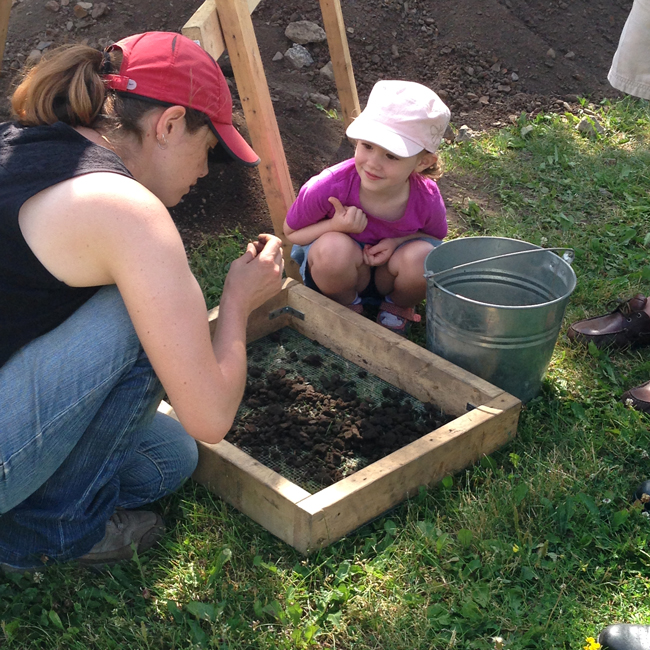
[Editor’s Note:] Every year, McGill awards two prizes for the dissemination and popularization of research through media and public engagement. One prize goes to a professor, the other to a graduate student, research associate or post-doctoral fellow. Each winner receives a cheque for $5,000. In creating this prize, Principal and Vice-Chancellor Suzanne Fortier wishes to recognize the efforts made by professors, post-doctoral fellows, research associates and graduate students who go beyond their studies and research to engage with the media or the public. By sharing the results of their research as well as their expertise with a broader audience, they extend the reach and influence of their scholarship and support McGill’s commitment to engage with the wider community.
McGill’s Jennifer Bracewell, a doctorate student in archaeology and one of last year’s winners, writes about her experience opening up to the public an archaeological research project in Verdun.
By Jennifer Bracewell
Time and again, in my ten years as an archaeologist, I have had people tell me how interesting they find archaeology, or how they wanted to be an archaeologist when they were a child. And yet actual archaeology is often inaccessible to the public, which is why I jumped at the opportunity to work with the City of Montreal to create a real archaeological research project that would also be open to the public.
The site at Maison Nivard-de Saint-Dizier was amazing for this: located in a public park in Verdun, next to the bike path that borders the St Lawrence River, it is the largest prehistoric site on the island, as well as an interesting historic site. We benefitted from the experience and resources at the Maison Nivard-de Saint-Dizier museum, where cultural outreach and education is their mandate.
One of the most satisfying parts of the outreach program was the sense of involvement and even ownership that regular visitors from the community communicated to us. Some people came by every few days to see how we were getting on. Others brought us information and photos from their own history in Verdun, which contributed to our knowledge of the borough’s development. One couple even knocked on the door of our team trailer during a thunderstorm: it was the only day they both had off, so they decided to come despite the torrential rain! The local media came to interview us for newspaper articles, radio programs, and even television segments in both French and English.
The interest and investment of people of indigenous heritage added a lot to the project. We were featured on APTN and in the Iorì:wase newspaper of Kahnawake. Charlie Patton, a faith-keeper from the Mohawk Trail Longhouse, performed a ceremony for the ancestors on the site with our students, Chief Christina Zachary-Deom, and some visitors from the community attending. From these and other interactions we have learned so much about the Haudenosaunee worldview, and a very different understanding of the past.
We had so many children visit the site, with camp groups, community organizations, or their parents. They screened dirt for missed artifacts and washed the mud off others. Even if this hands-on experience doesn’t inspire them to become archaeologists, knowledgeable and engaged citizens are important for maintaining and protecting cultural heritage — the desire to understand the past is not limited to archaeologists!
I was delighted when I heard that the Principal was setting up a new prize to recognize research outreach — it was validating just to know that the university valued this kind of project, where research goes slower, but so many more people participate. I also believe that it is going to be an important skill for the future of archaeology, and I am pleased that our undergraduate students learned about how to connect with the community where they were working, as well as how to draw a profile and dig a post-hole. I decided to re-invest the money I won into my work: I used it to buy a new laptop and to attend the Indigenous Mapping Workshop in Winnipeg this November.
The deadline for nominations for the annual Principal’s prize for public engagement through media is is Jan. 31, 2018. Get more details online.
